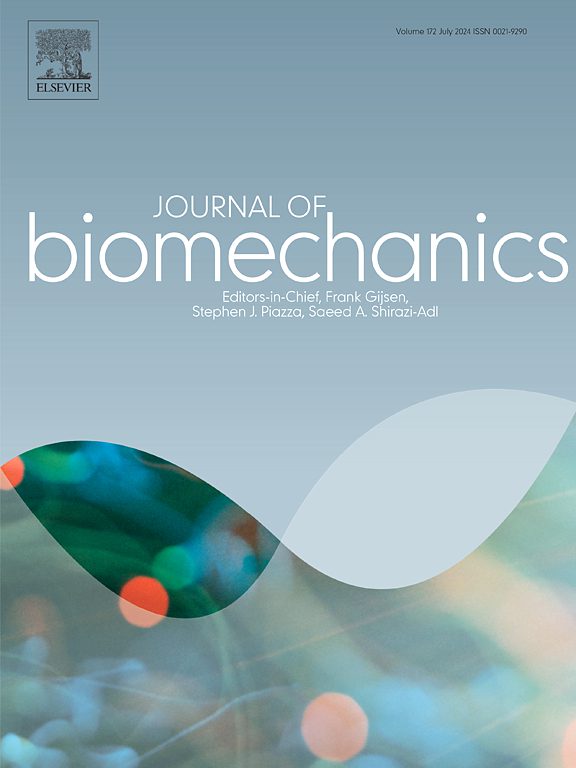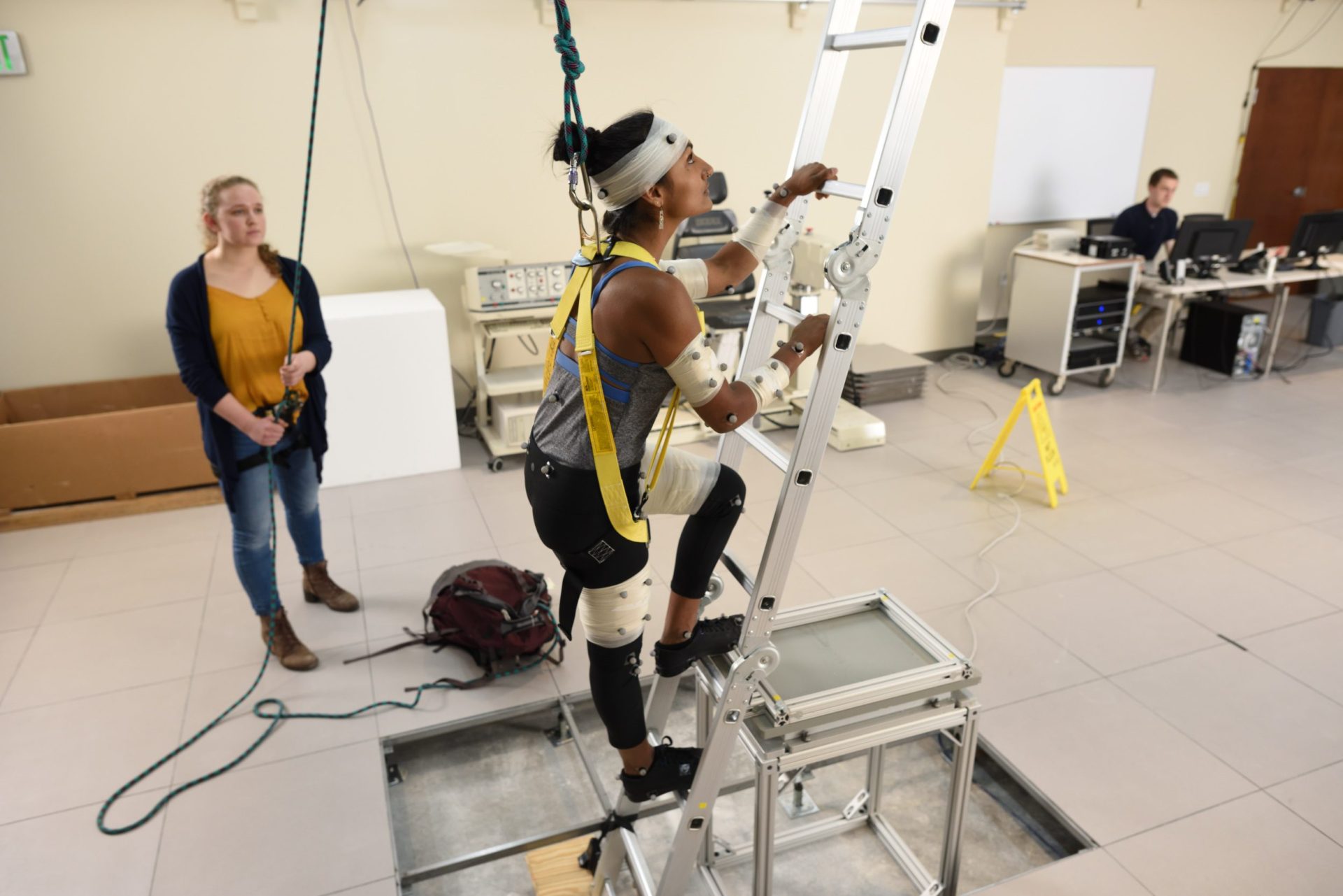
Undergraduate Student
Year Graduated: 2022
Chris Deschler
After HMBL
University of Pennsylvania, MS

Overreaching is a common cause of ladder falls, which occur frequently among older adults in the domestic setting. Reaching and body leaning during ladder use likely influence the climber-ladder combined center of mass and subsequently center of pressure (COP) position (location of the resultant force acting at the base of the ladder). The relationship between these variables has not been quantified, but is warranted to assess ladder tipping risk due to overreaching (i.e. COP traveling outside the ladder’s base of support). This study investigated the relationships between participant maximum reach (hand position), trunk lean, and COP during ladder use to improve assessment of ladder tipping risk. Older adults (n = 104) were asked to perform a simulated roof gutter clearing task while standing on a straight ladder. Each participant reached laterally to clear tennis balls from a gutter. Maximum reach, trunk lean, and COP were captured during the clearing attempt. COP was positively correlated with maximum reach (p < 0.001; r = 0.74) and trunk lean (p < 0.001; r = 0.85). Maximum reach was positively correlated with trunk lean (p < 0.001; r = 0.89). The relationship between trunk lean and COP was stronger than that between maximum reach and COP, denoting the importance of body positioning on ladder tipping risk. For this experimental setup, regression estimates indicate reaching and lean distance of 113 cm and 29 cm from the ladder midline, respectively, would lead to ladder tipping on average. These findings assist with developing thresholds of unsafe reaching and leaning on a ladder, which can aid in reducing ladder falls.
People

Undergraduate Student
Year Graduated: 2022
Chris Deschler
After HMBL
University of Pennsylvania, MS

Graduate Student
Year Graduated: 2020
Erika Pliner
After HMBL
Neuroscience Research Australia

Research

2020